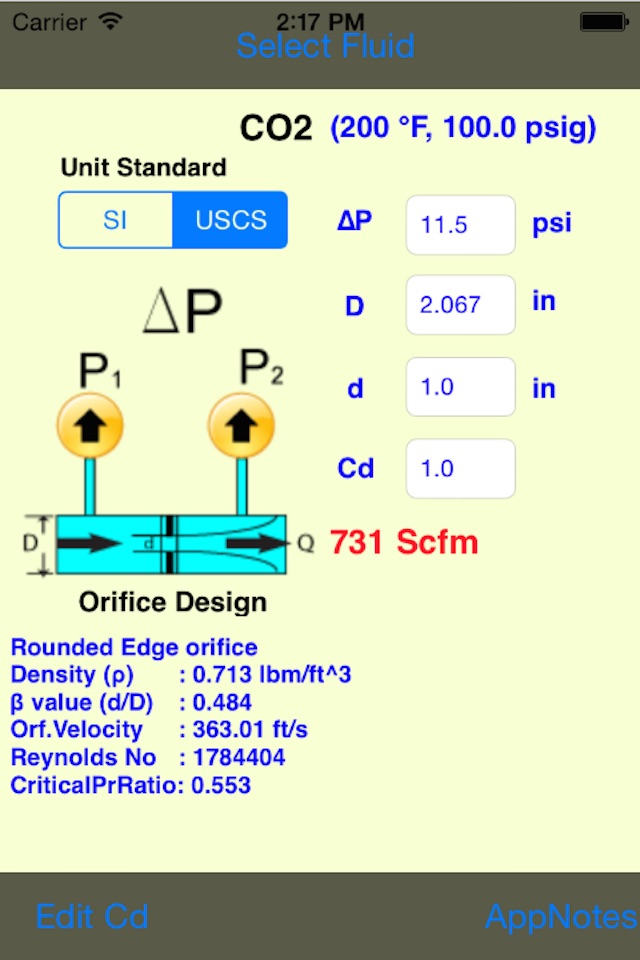
Orifice Flow app for iPhone and iPad
Developer: Kaup Shenoy Associates
First release : 15 Nov 2011
App size: 1016 Kb
Measurement of fluid flow in pipes and conduits using orifice plates are very common in industrial applications. This app quickly computes the flow rates for liquid and gases based on standard parameters as per the model shown. Users can pick any fluid from a list of fifteen most common fluids used in industrial applications. Therefore, this app can be a very helpful tool for practicing engineers and designers in design and analysis of flows in different applications.
A case study on CO2 flow rate is shown in the screen shot. The result is consistent with other methods used by the industry in computation and difference is less than 0.1%. Fluids that are not in the list, users can create a custom fluid with property data and compute the flow rate using the model provided in this app. Custom fluid data can be saved and reloaded every time when custom fluid is selected.
Fluids:
Air, Steam, Water, Nitrogen, Oxygen, Hydrogen, Helium, CO2, Methane, Ethane, Chlorine, Ammonia, Argon, Hydraulic oil, HFC(R410A), Custom (users choice).
Orifice Type:
App gives four different standard orifice design with recommended discharge coefficients as shown in the following screen shot. It also provides the details of the model used in the computation of flow rates for liquid and gases. This model is valid even for nozzles, venturi-flow meters for which the discharge coefficient (Cd) is unity.
Measuring Parameters:
Fluid inlet temperature and pressure, orifice geometry, pressure differential using standard pressure taps (ISO 5167), are the standard parameters required in the computation. Based on the orifice geometry, recommended discharge coefficient Cd is used. However, users can edit this using manufacturer’s data for more accurate results. App notes provides brief description of different orifice parameters for quick reference.
Unit of Measurement:
Users can choose different unit of measurement for both flow as well as pressure drop under given unit standard (SI or USCS). This can be conveniently selected while choosing the fluid from the picker list.
App notes provides additional guideline with a link for complete documentation on implementation and validation of math-models used with industry examples.



